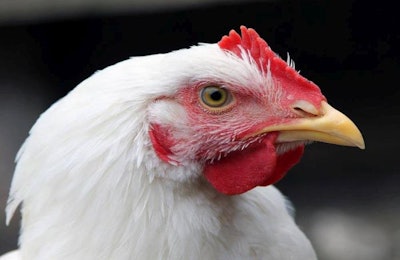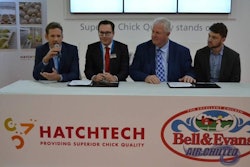
Changes in modern broiler and hen production over the last 50 years have benefited the poultry meat industry economically but have also come with a trade-off in terms of the industry’s environmental footprint. This is not all bad, but it requires the industry to be detailed and transparent in how they are measuring and communicating these metrics, said Dr. Greg Thoma, speaking at the 2016 International Production and Processing Expo in Atlanta.
Improvements made by the agriculture industry have resulted in less land being used in 2010 to produce the same amount of crops for animal feed as in 1965. In broiler rations, the proportion of corn has increased while soybean meal and tallow proportions have decreased. In hens, the proportion of soybean meal has increased while the amounts of wheat and salt have decreased in the feed. Alfalfa – commonly fed to broilers and hens in 1965 – is now rarely used in modern poultry production as synthetic amino acids have become commonplace, thus reducing reliance on such plant-based protein sources.
All of these improvements have resulted in an increase in feed conversion and a production time that is 19 days shorter for the modern broiler (47 days in 2010 compared to 66 days in 1965). Dr. Thoma said the amount of chicken produced annually in the U.S. has increased more than six times that produced in 1965 with chickens slaughtered in 2010 totaling 50.1 billion pounds compared to just 7.8 billion in 1965.
For hens, these improvements over time have resulted in fewer spent hens than in 1965 due to greater hen productivity – 186 eggs laid per hen in 2010 compared to 145 eggs per hen in 1965.
However, a greater amount of larger birds produced also requires more animal feed, which has been the largest driver of the industry’s impact on sustainability and the environment; feed rations have accounted for the most gains since 1965 in fossil energy use, water depletion and land occupation, according to Thoma. Broiler breeding contributes 13 percent or less to the impact and resource consumption attributed to producing 1 kilogram of live-weight broiler. Although spent hens require more resources to produce 1 kilogram of live weight compared to broilers, he said their overall contribution to resource consumption in the production of poultry meat is less than 8 percent.
“Sustainability is about trade-offs. We just have to be informed about what those tradeoffs are and as a society, agree that these are trade-offs we are going to make. I, for one, like my chicken,” he concluded.
See all the latest IPPE news.

















